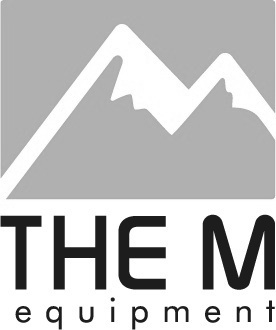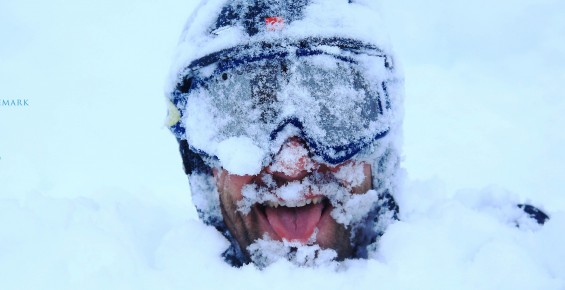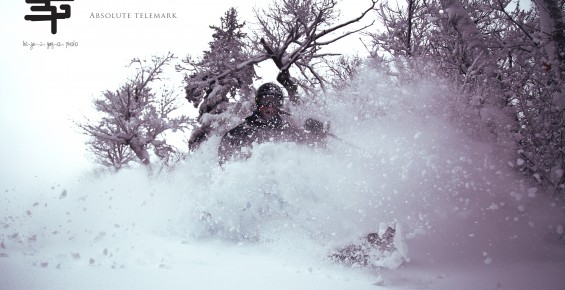Through time, equipment as evolve a lot. From no cable pin binding (here), leather boots (here) and tall skinny skis (here) to rigid cable bindings (here), stiff plastic boots (here) and twice as wide skis (here).
A debate of great matter has emerged of this evolution. Where to mount a telemark binding?
To make a long story short, before parabolic skis, telemark bindings simply used to be mounted at the point of balance of the ski. You took the ski, balanced it on one finger and mount the binding pin (the front of the foot) aligned with that point. Ta dam!. In comparison, alpine skis are mounted by placing the binding at the position that will align the center of the boot sole with the center of side cut.
Then, when parabolic side cut was invented in the mid 90’s, the point of balance didn’t match with the center of side cut anymore. At this point, pin bindings where mounted on the center of the side cut.
But over the past decade, the rigidity of boots and bindings has increased dramatically. It affects the way the back ski reacts to the telemark knee drop while turning. On top of that, parabolic skis are not the first criteria skis are bought today. There’s the camber, the rocker, the side cut, the general flex of the skis, it’s width, tapered tail design… So back to square one, where do we mount the telemark modern telemark binding? It is one of the questions I’m most often asked, even by seasoned telemarkers
I found out that no one agrees on any general rule. I’ve asked top telemark skiers from different categories backgrounds and here’s what they had to say:
Big mountain, Paul Kimbrough:
I always struggle with where to mount my skis and often after mounting and skiing them I decide to remount because I don’t like the original mount. I ski on Moment skis and I tend to like a more symmetrical ski, so my mounts tend to be closer to true center than most telemarkers. With 190cm Bibby Pros, I mount about 5cm back from true center, I think boot center is close to side cut center with this mount, maybe a little back… When mounting I do a lot of eyeballing and usually wing it a bit. Hope that helps.
Cheers
PK
Telemark racer, Mathieu Brunet (represented Canada on telemark world cup):
I’ve been mounting my skis half a inch forward of balance center. But now, with technology improvements, I just mount them according to Alpine standards.
Will Johnston, park builder at Schuss Mountain.
Since I ride Here in the midwest, I ride a TON of park and jumps. I ride bomber bishop bindings, so they have three spots you can mount the binding to the plate. they are mounted ski center to boot center, minus the duck bill. but can move them back up to 25mm.
Tucker Vollbrecht, (see my interview with Tucker to learn more about him)
My bindings are mounted with the boot sole center on the manufacturers center line.
Evans Parent, (see my interview with Evans to learn more about him)
With my NTN setup, I always go boot center to manufacturers center line.
More and more, we tend to see exactly that, boot center to manufacturer’s center line. If you don’t know where to start, definitely try that. After all, telemark is getting closer than it ever has to performance of an alpine setup. Here’s an excellent web site that suggest where to mount your skis, depending on brand and models . But beware, people will still debate on the subject for many years to come…
Myth number 1:
If you change your binding’s position, it will affect the structure of your ski and will make it weaker. Nothing is further from the truth. Skis can be remounted many times and it won’t change anything. As PK says, you can change your mind and re-drill your skis to another change binding position. Just make sure you don’t drill too close to the old holes. And fill up the holes with epoxy.
Myth number 2:
Binding position is crucial. Not so true. You can have them mounted where you think it’s the best and you will probably never see the difference. I’ve seen people mount their bindings up to 20 cm back from center and they could still ski. Although this guy ripped the binding off because it was too far out of the ski’s thickest part. If you don’t go to the extreme, you shouldn’t have any problems.
Myth number 3:
Mounting telemark binding is hard. Well, that’s actually true. Black Diamond Equipment as calculated that the forces on screws are and say:
Among many guidelines, these include using a mandatory 8-10 Nm screw torque with 1-hour epoxy. Alpine binding screw mounting torques (2-3 Nm) are not enough for telemark binding forces. Any less torque than 8-10 Nm does not create enough clamping force to over- come upward binding force. As a result, your screws can loosen, resulting in the binding ripping out.
That’s one reason why most telemark bindings companies now build models with 6 screws. To give you an idea, 3 pins Rotofella have 3 screws. Today’s telemark is creating that much more tension.
Aside from tension, the 90 degree angle of the drill bit is the most significant factor of success to a lasting binding installation.
Myth number 4:
You need the jig to mount a binding. Nah. Most companies will provide a paper template. And if not, a good tech will make a template himself and will be able to mount any binding. It just takes more time.
To have a happy binding setup, you should:
- have your binding mounted by a telemark tech that know what he’s doing
- not have them mounted at you regular ski shop
- mount them yourself only if you’re a proven handyman.
I hope that your half as mixed up as you were before you read that post.
If you are still uncertain, just mount them like Will Johnston recommends (center-to-center minus duckbill)
Don’t forget to subscribe to our free email updates.
Join Absolute Telemark









That was actually pretty helpful. Largely just reinforcing what I thought to be true but even that helps. If nothing else its easier to make that decision when the tech asks where to mount my new skis this year.
Hi chris,
This is great. Hope you have a great season
Thanks for this great info. I am about to embark on my first hand mount because I did not heed point 2 under Myth 4: Don’t use your regular shop! A screw came out of my Axl and the binding ripped out (thankfully, not in a “do not fall” scenario). That combined with the Black Diamond tips sheet you referred to made me a little nervous that typical techs might not (a) take their time to get it right and (b) are unaware of the forces generated by dropping the knee ( BDs tips can be found here: https://blackdiamondequipment.com/on/demandware.static/Sites-BlackDiamond-Site/Sites-bdel/default/v1392448396741/files/F10%20BD%20Mounting%20Tips.pdf).
I really appreciated this discussion because most of what I’ve found regarding this topic is outdated. Nice to have a discussion regarding mounts on new shaped skis using stiff boots.
Thanks!
Hey Tele J
Thanks for the great comment. Give us some news when your are done. Almost, my tech would recommand to mesure twice and check things back again before you drill.
I’d like to share my set-up: Rotafella NTN on Rossignol twin tips; perfect for 50/50 switch riding.
Love it.
You should share a video, I’d love to see it!
I should had that last year I tried a friends set up that are exactly like mine, same lenght, same binding, same model.
I went for a nice 45+ degrees angle slope about 50 feet wide.
I couldn’t ski it. I had a lot of trouble pivoting the skis at the end of the turn and I couldn’t slow myself as much as I wanted. I crashed twice, broke a pole and just didn’t get any confidence until the slope angle mellowed out at the bottom of the couloir.
In the end, his bindings were set up 1 inch forward than mine. And that’s all it took the put me out of balance and confidence.
Maybe I would get used to it. Maybe not. But I was amazed by the difference it made…
Hey Rene, great topic and thanks for all you’re doing to spread tele stoke and knowledge! Love your blog and love the podcasts!
I think there might be a larger question here hiding behind your orriginal one and I think it has to do the ease of the end user to have it how they want it, wherever and whenever they decide to monkey with it. Having said that, lets discuss some standards, some trends, and some phyisics.
Having been an alpine, nordic and tele skier/tech who is 100% on tele for ten years or so now, I can say without hesitation that there is as much personal preference involved with this as there is simple physics. You made a great rundown of the “history” of standard mount locations with regard to generational shifts in binding/boot technology. That said, I think most telemarkers today and certainly almost all new ones have been on or will shortly be on ntn systems of one form or another. All ntn boot models I know of have a center line on the boot sole measured between the beginning of the toe box (after the bill) and the heel of the boot. Rottefella recommends their ntn systems mounted with this line over manufacturers mount line. Since all ntn systems borrow at least something from the Rottefella patent(s) I’ll restrict this diatribe to a discussion their tech alone, though any ntn system should in theory by applicable.
Now we get to the fuzzy part, ski manufacturers.
Many, if not most, of todays skis incorporate some kind of symmetrical (or in the case of Elan, Asymmetrical) Rocker in the front and/or back of the skis. The amount of the rocker and it’s position (especially early rise in the tip) can drastically change the “perceived” center of the ski with regards to its flex pattern, not only in the shop, but on the hill as well. From what I can tell, companies that are making skis of average to above average quality have started adjusting their mount point location lines to accomodate these changes. Ideally, the narrowest part of the waist would also be the apex of the skis flex point and that’s where your mount line should be. A ruler and a hand flex are all the tools needed to verify this. In the case of Rottefella’s bindings this puts boot center over manufacturers mid point mount line. Many companies today are adding designations in 1cm increments fore and aft of this line to tailor to user taste. This is why, in my book, The Freeride binding reigns supreme as it is the only ntn tele binding currently available to my knowledge that lets the user have some adjustability forwards and backwards of the orriginal mount point after the fact. This is in keeping with Ski manufacturers trends in providing alpine binding systems that not only adjust for boot sole length but also fore and aft stance positions for their customers post mount.
Case in point, I’ve been skiing alot of Elan’s spectrum series skis all with freeride bindings and recently had a pair of the 85’s mounted up with pink plates. I had them set up boot center over manufacturers mount mid point line and went skiing. I really enjoyed them but noticed that due to the absence of any metal in that particular model, I seemed like I wanted to get a liitle too much into the back seat at the end of the turn when stomping my uphill ski to pop into my lead change transition. After a dozen runs or so I stopped, moved the bindings back just one hole on the plate and bingo, I was where I wanted to be. The skis hooked up easier on initiation and released with a nice pop at the end of the turn making my lead change effortless and not trapping me in the back seat.
So, in closing, I guess the debate about where you mount your sticks for me has way less to do with where you mount them and way more to do with the overwhelming majority tele binding manufacturers NOT providing any kind of easy user adjustability after the fact or on the fly. If the Freeride is the only binding that currently gives any adjustability in this regard, it should stick out like a fart in church that tele binding manufacturers should be allowing for this as alpine ski/binding manufacturers delve even more deeply into giving the end user the ability to choose how their style meshes with their equipment without having to drill their skis over and over and over. Thanks for lettiing me rant!
-Jacob-
Perfect, thanks Jacob! I am glaring at my new Candides 3.0 for 3 weeks or so and did not decided yet where to put the Freeride’s plate.
I guess I just move the binding backwards on my old skis and see.
that would be a good start. If you feel like you need more adjustability in the aft position, have them drilled 1cm or so back from the middle point on the plates and you should be good! enjoy and happy skiing!
Thank you for the marvellous contributions you and your colleagues make to the evolution of telemark. And in particular this chapter “Binding position” I try to have several types of skis, and bindings with me in the mountains as the nuances in design make for an “exciting” time as conditions improve and detiriorate throughout the season. Cheers!
I’ve always mounted to the same ski manufacturer center point (not marked on tele boots, but I line them up with my alpine boots and make the mark). On the snow skiers can’t tell the difference if it’s less than 1 1/2 inches anyway according to test results I saw somewhere. But the other day, after tele skiing 25 seasons already I found out (remembered?) why balance point is important. With the binding in free climbing position, I can’t get the tail of the ski out of the snow! Had to lock it back down to negotiate the uphill powdery woods